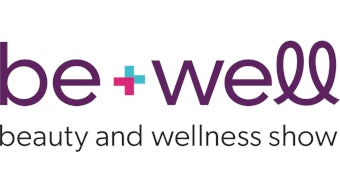
The holidays are a critical time for the beauty category, which has been growing at a fast clip this year. But inflation and the end of student loan relief have many shoppers feeling the crunch. Add in the stiff competition among beauty brands and retailers, and winning wallet share only looks more difficult. This makes standing out and captivating shoppers a top priority for beauty brands.
Influencer marketing, live shopping and loyalty apps are three investments beauty brands and retailers are making to differentiate themselves and transform distracted shoppers into customers in this critical period—and into the new year.
Report: Beauty Cracks Top 5 Sales Sectors During US Holiday
1. Influencer Marketing
The creator economy offers brands the opportunity to cut through the clutter by partnering with creators who already have intimate connections with their target audience. But brands should avoid the pitfall of chasing paid influencers based primarily on audience size, and instead focus on influencers who have an organic connection with their audience and brand.
Increasingly, brands are supplementing paid influencers with user-generated content (UGC) and organic influencers. For example, Tarte Cosmetics identified teachers as a key community that can be influential in promoting the brand. Its CEO, Maureen Kelly, went on TikTok and appealed directly to the tight-knit, influential community of teachers. That post went viral and helped organically sign up an army of teachers who became brand influencers. The lesson: Right-fit influencers will have a well-documented passion for the brand, and may have even recently shared glowing recommendations of its products to their followers to inform their holiday shopping lists.
The beauty brands that excel with influencer marketing make their creator and customer relationships genuine partnerships. For example, several beauty brands have specialized outreach and pricing for beauty influencers like certified aestheticians and beauty consultants. The beauty brands that nurture these kinds of influencer partnerships build unique content ecosystems that draw robust shopper engagement and produce an outsized impact long after the holiday season.
2. Live Shopping
Sometimes it takes more than standard imagery and text to dazzle shoppers. Selling products and making the case for them over live streams—known as live shopping—can be what you need to solidify customer confidence. The live shopping category is expected to grow to $68 billion in the U.S. market by 2026. Walmart, YouTube and eBay have introduced live shopping capabilities, while beauty brands like Too Faced and those under the L’Oréal group have dabbled in the practice.
Through live shopping, brands and retailers can build on the equity creators have with their audiences, who may be more inclined to make a purchase when they watch a trusted influencer discuss and use products in real time. And, when paired with limited time offers, live shopping produces a sense of urgency.
Live shopping is especially adept at helping brands connect with younger shoppers, whose purchasing power is growing. Gen Z shoppers are increasingly sustainability-minded, and live shopping allows brands to directly communicate their green credentials to them. Teaming up with sustainability-forward influencers allows environmentally conscious brands and retailers to dynamically articulate their values and engage shoppers.
For instance, brands like Aveda, which offers 100% vegan hair care products, and bareMinerals, which uses recyclable packaging materials , could leverage live shopping to demonstrate how their products tie into their climate commitments. However, brands without sincere sustainability investments who use live shopping this way could appear disingenuous to shoppers, hindering the opportunity to deepen customer connection. Therefore, brands should ensure that any partnerships in this category genuinely align with their business practices.
3. Loyalty Apps
Loyalty apps are having a big resurgence post pandemic because retailers and beauty brands are looking for ways to engage customers and track purchases across online and offline channels. Brand loyalty apps are becoming the digital wallet through which savvy brands are engaging with their customers.
With just a single tap of their mobile devices, shoppers can use loyalty apps and digital wallets to seamlessly make transactions and earn rewards, cutting down on checkout time both in-person and online—and reducing time for beauty customers to rethink purchases. This is why retailers like Sephora introduced Tap to Pay on iPhone.
In addition to streamlining shopping, loyalty apps offer the possibility of enhanced customization. With consumer information and transaction data at their disposal, brands and retailers can make personalized offers and recommendations across every channel.
For example, brands like M.A.C. Cosmetics, which offers promotions to medical workers, could use identity attributes in their loyalty app to provide discounts specific to that community. Or they could use app data to provide additional recommendations and discounts. These tailored offers allow brands to show customers they value their shoppers for who they are, not just the money they’re willing to spend.
Relationships that Pay Off Long-term
The gains beauty brands and retailers can make by leveraging influencer marketing, live shopping and loyalty apps aren’t limited to the holiday season. These initiatives usher shoppers into a brand or retailer’s content ecosystem, allowing the company to build deeper relationships—and increased loyalty—with shoppers over time. Those are relationships that will pay dividends not just for the holidays but into the new year and beyond.
About the Author
Sai Koppala is the CMO at SheerID and previously led a variety of marketing and product teams at global software companies like Google and SAP and start-ups like Proximity (acquired by Apple) and Apigee (acquired by Google).











